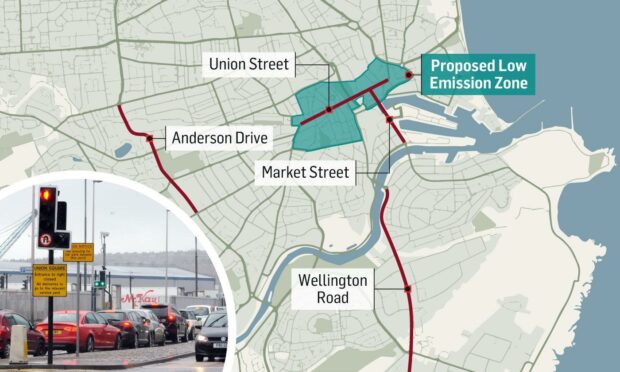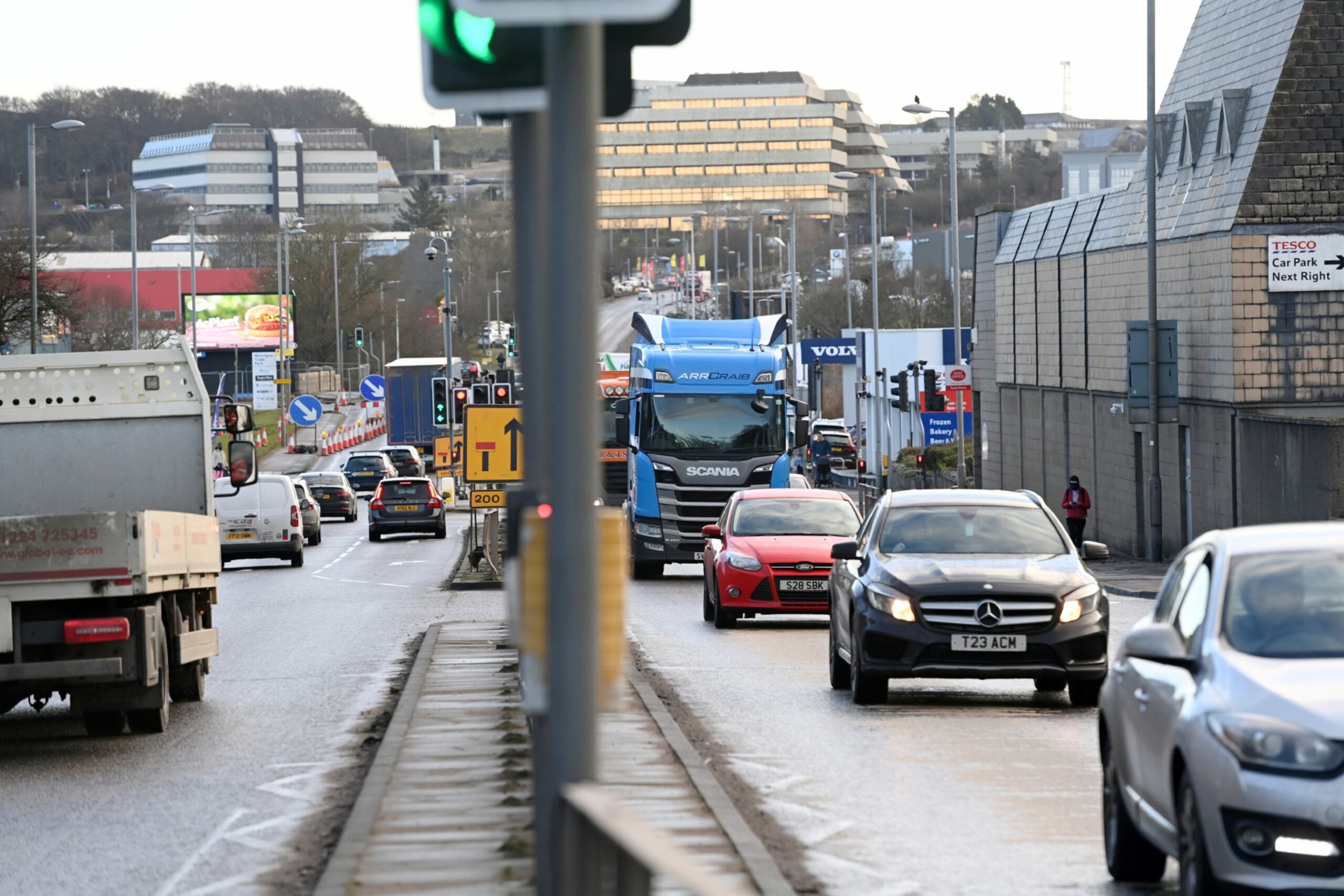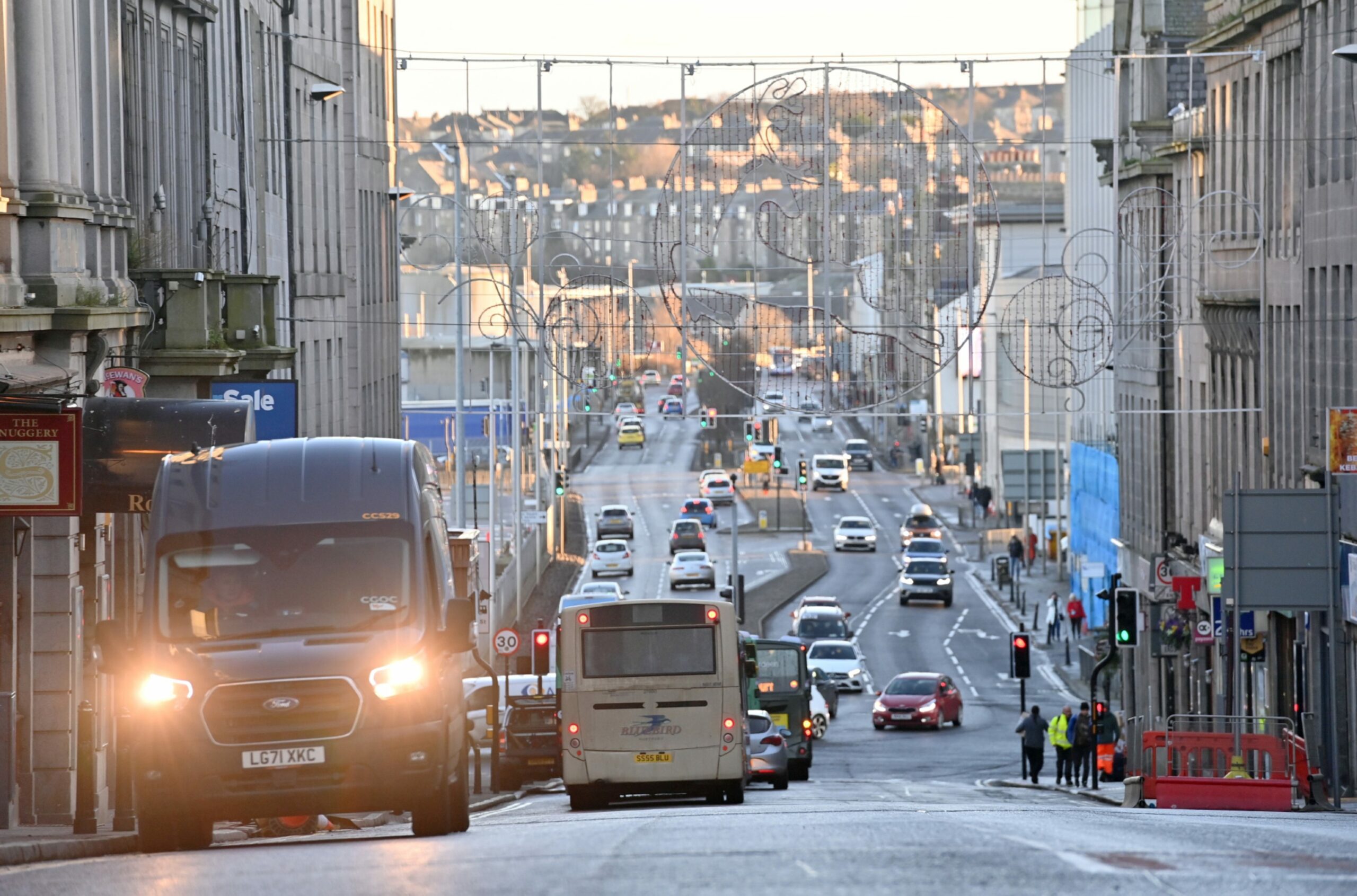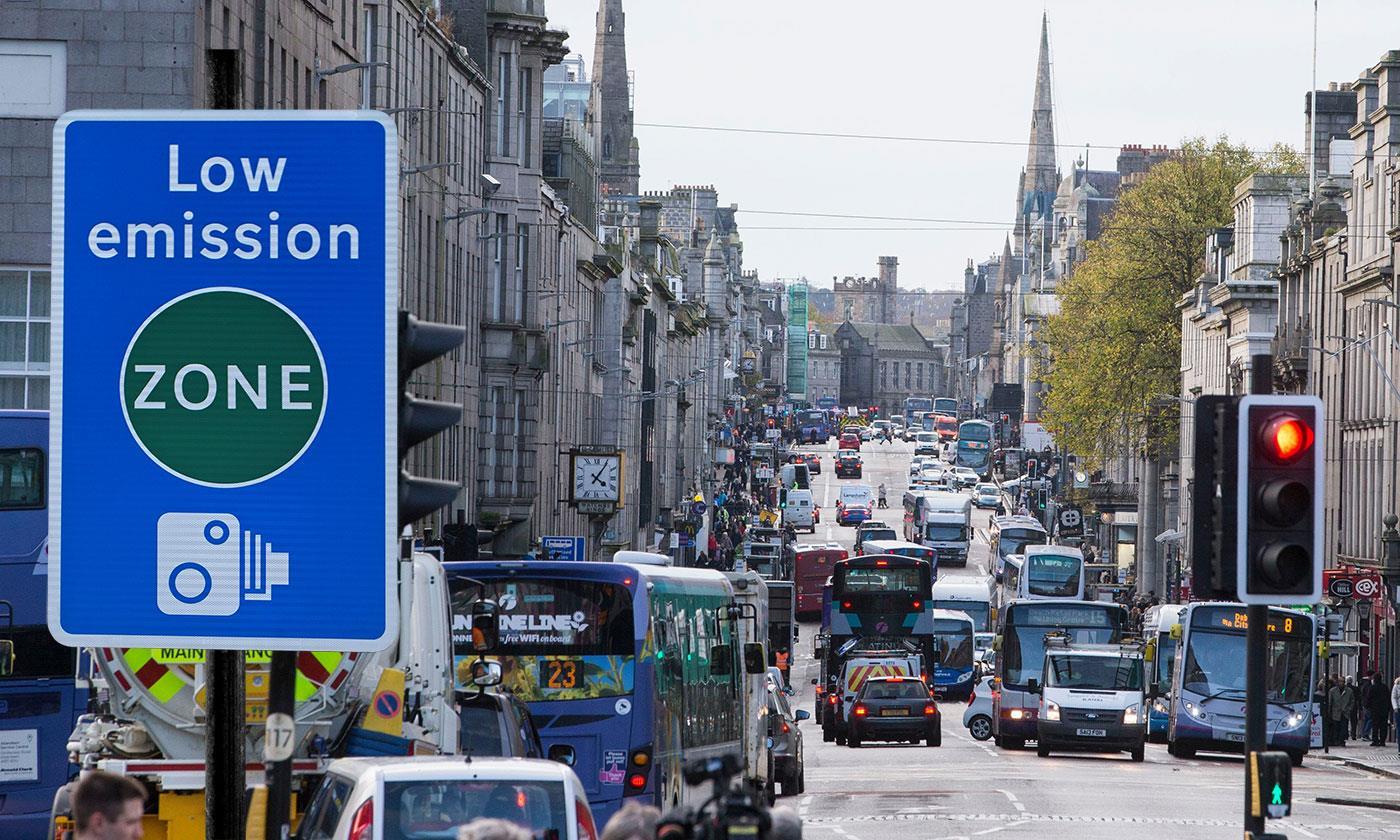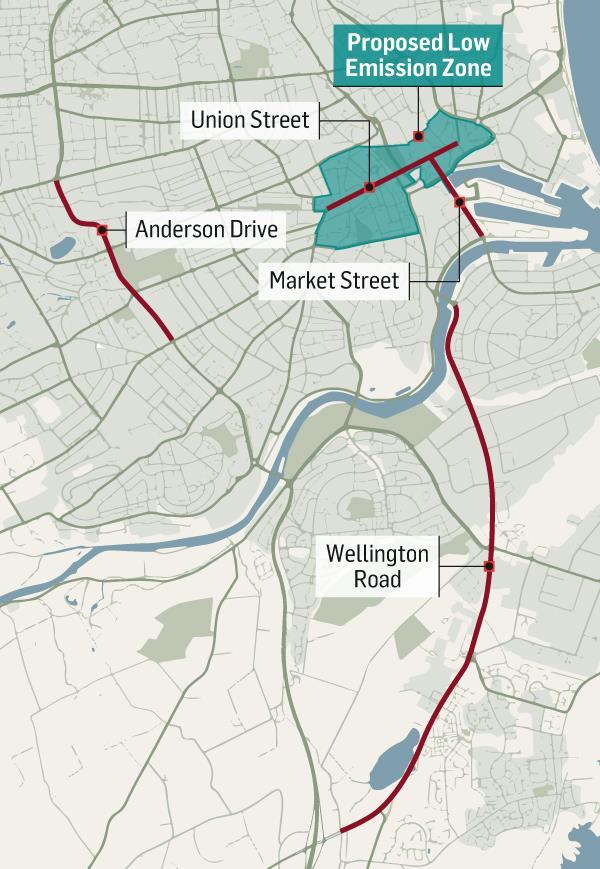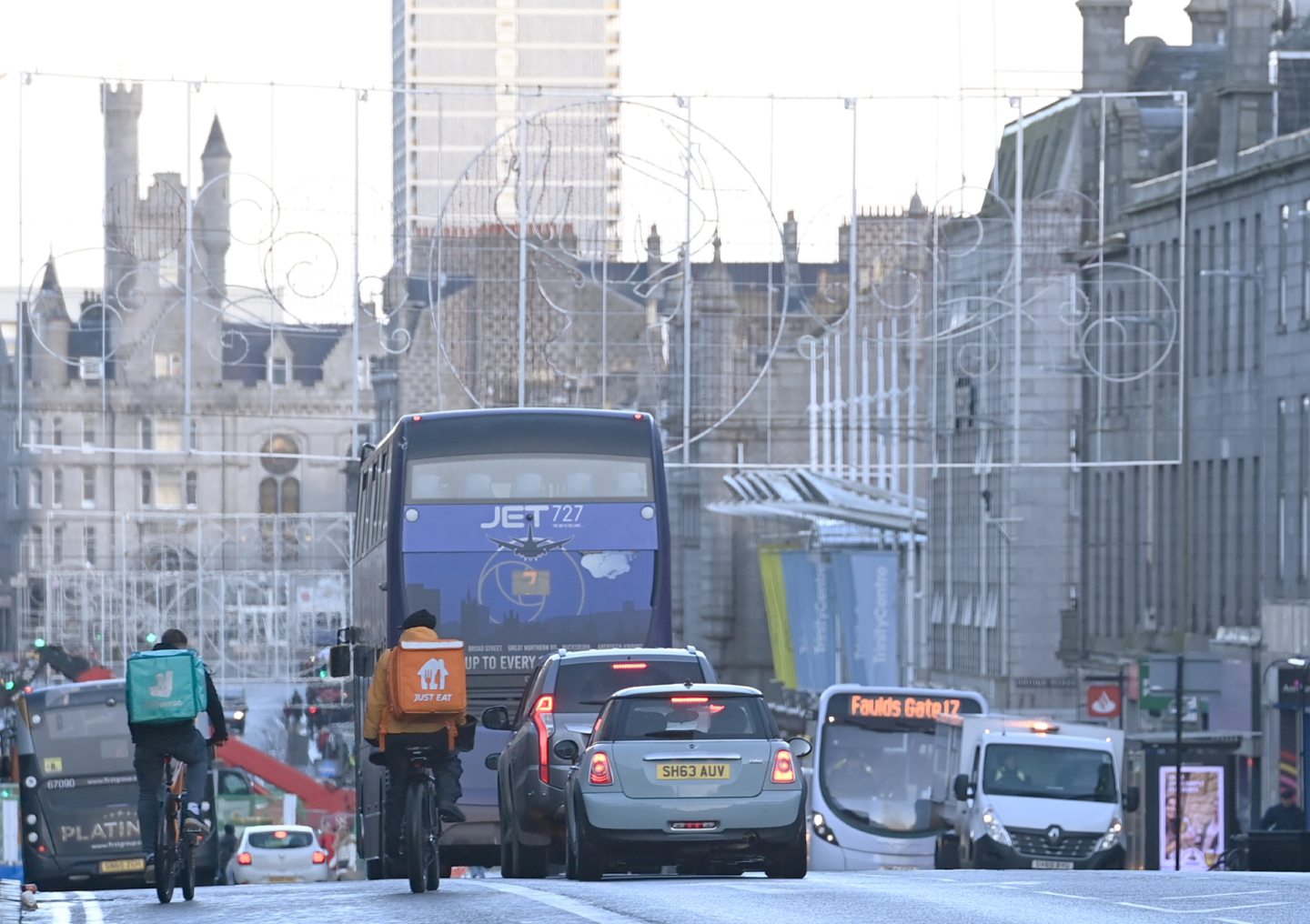Some of the worst streets in Aberdeen for air pollution are not located within the city’s Low Emission Zone plans, data has shown.
Friends of the Earth Scotland (FOTES) has analysed official air pollution data for 2021 all across Scotland.
The campaign group and charity looked at two key pollutant measurements — nitrogen dioxide, and particulate matter.
These kinds of pollution are produced by traffic.
The group found that the dirtiest streets for nitrogen dioxide in the air in Aberdeen were Wellington Road, Market Street, and Union Street.
Wellington Road was the most-polluted with nitrogen dioxide in the Granite City.
And across Scotland as a whole, it held the dubious honour in this measurement of the 11th worst street.
When it comes to particulate matter in the air, FOTES found Wellington Road, Market Street and Anderson Drive in Aberdeen were the worst offending areas.
But there are fears the problem is getting worse.
2021 pollution in Aberdeen higher in areas than in 2020
FOTES transport campaigner Gavin Thomson said Aberdeen’s air pollution problems were worse in 2021 compared to 2020, which he said is “unacceptable”.
The group pointed to data it analysed from automatic monitoring stations around Scotland, which found there was an average of 25.13 microgrammes of nitrogen dioxide per per cubic metre on Wellington Road across 2020.
This figure was at 27.68 in 2021, averaged across the year.
Extensive exposure to such air pollution can lead to serious health impacts, particularly for those with respiratory conditions.
Mr Thomson said the pandemic’s impact on traffic levels will have made a difference on emission levels compared to before lockdowns, but said he is still concerned.
He said: “2020 was an outlier for obvious reasons and we witnessed unprecedented changes to all areas of public life.
“But for traffic emissions, it was back to business as usual in 2021.
“From the evidence we have, every street in Aberdeen experienced higher levels of pollution in 2021 than the previous year.”
Will the Low Emission Zone (LEZ) help?
Mr Thomson continued: “The forthcoming LEZ should help us improve air quality permanently but lengthy delays, even before Covid, has forced people in Aberdeen to keep breathing polluted air.
“But we need to improve Aberdeen’s buses, with a comprehensive, publicly-owned affordable bus network.
“This would take cars off the road, reducing pollution and climate emissions.”
The FOTES campaigners pointed out that Wellington Road, the most-polluted street in Aberdeen, is not within the boundaries of the proposed LEZ.
The LEZ would ban vehicles which do not meet strict emissions requirements.
They also highlighted a change to the plans made last year, which reduced the scale of the zone even further.
Anderson Drive, another of the streets identified as particularly polluted by FOTES, is also not within the zone.
Market Street lies only partially within the the controversial LEZ boundaries.
Last year, Scottish Green MSP Maggie Chapman said the reduced scale LEZ plans are “lukewarm half-measures that please nobody”.
‘Little merit’ comparing to pre-covid, says council
Tory Councillor Philip Bell, the local authority’s environmental spokesman, objected to FOTES comparing pollution levels between the two years of the pandemic we’ve experienced so far.
He said: “The FOTES report concedes that 2020 was an outlier and indeed there is little merit in making comparisons between 2020 and 2021 or either year with pre-Covid periods.”
He continued: “Pollution levels were progressively reducing at all continuous roadside monitoring locations in the four years prior to the restrictions introduced at the commencement of the Covid pandemic.
“There was a substantial reduction in nitrogen dioxide concentrations in 2020 due to the significantly reduced traffic volumes.
“Although concentrations increased slightly in 2021 due to the higher traffic flows compared to 2020, they were still significantly lower than pre-Covid levels.”
‘There is still a need to further improve air quality’
Mr Bell said pollution levels at all the city’s continuous monitoring sites were “significantly below the national air quality annual mean objectives of 40 microgrammes per cubic metre for nitrogen dioxide, and 18 microgrammes per cubic metre for particulate matter.”
But, he said there is still more the city must do.
He continued: “Nevertheless, we recognise there is still a need to further improve air quality.
“We consulted on the city’s proposals for a city centre LEZ in 2021 and will be submitting the final proposals to the Scottish Ministers for consideration in the next few months”.
Want to know more about Aberdeen’s Low Emission Zone plans, including a full map of the boundaries, and if your vehicle would be banned? Click here.
And you can read about pollution data in Inverness here.
